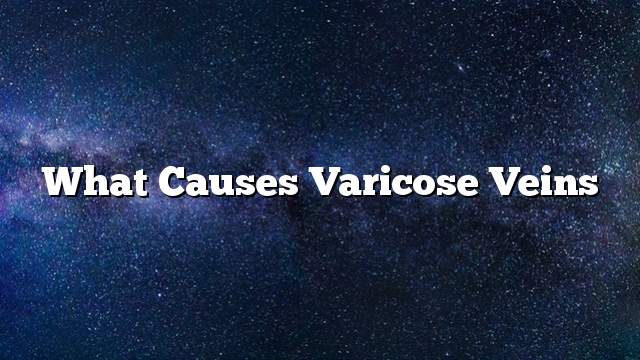Varicocele
The scrotum is the skin sac that carries the testicles, contains the arteries and veins that connect the blood to the gonads, and any abnormalities in the veins of the scrotum may lead to varicose veins. Varicose veins are known as abnormally expanding veins in the blood vessels that are present in the scrotum, through which the blood moves, extending from the abdominal cavities to reach the sperm, and when a defect, causes the pressure on the veins, causing the formation of blood Varicose veins, resulting in accumulation and accumulation of blood around the testicle, and thus affect the sperm in terms of number and movement. Varicose veins may be the cause of some cases of male infertility, or even shrink the size of the testicles, called these veins that are affected by the expansion (Barlhp).
Varicose veins are a common disease and can be found in 15% of males in general. They affect about 15% of teenage boys. Varicose veins are generally formed during puberty and are more present on the left side of the scrotum. The left and right sides of the scrotum are not similar. Varicose varicose veins can appear on both sides, but this is extremely rare, and not everyone who suffers from varicose vein disease is affected by sperm production.
Causes of Varicose Veins
The primary cause of varicose veins is the expansion of the blood veins to become larger than normal, because the valves of these small veins in the scrotum do not work well. In a normal way, these one-way valves along the veins allow the blood to flow to the heart, If the valves do not work well, the blood can turn back (due to gravity) and collect in the lower parts of the vein leading to the formation of varicose veins, which is similar to how the varicose veins form in the legs.
It is not entirely clear why these valves break down. Vesicular varices can occur if there is a blockage in larger and higher abdominal veins. This increases the pressure on the small veins in the scrotum, leading to enlargement and expansion. Men over 40 years of age. For example, if varicose veins have suddenly appeared in an older man, this may indicate a kidney tumor that puts pressure on the veins.
The cause of puberty is greater. It is because puberty is the period of growth of the testicles quickly, and they also need more blood to keep up with their dietary requirements. If the valves do not work properly, this results in varicose veins due to the inability of these veins to Carry extra blood. The reason is that most cases are on the left side, as mentioned earlier, due to the different anatomical structure of this region between left and right, the location of the left testicle vein is more susceptible to the amount of blood returned from the vein of the testis right.
Varicose veins symptoms
Many men may have varicose veins without their knowledge, they do their daily lives normally, and they may also have children. But the other part of the people may have varicose veins, which are the cause of their infertility. There are some symptoms of varicose veins, including:
- The incidence of pain in the testis is accompanied with itching, and when the patient rests on the back the pain goes.
- Inflammation of the scrotum.
- Small size of the testis on the affected area.
- Feeling extra weight and abnormal in the testicle.
- Pain increases with standing or physical exertion, especially over long periods of time.
- The situation is getting worse by the end of the day compared to the first.
- Over time, the size of the varicocele may increase and become more pronounced. In young people, the presence of varicose veins reduces sperm production, and sperm production can often improve with treatment.
- If the patient experiences pain or swelling in the scrotum, or a lump is detected in the scrotum, or it is observed that the testes have different size, or the varicose veins have appeared in young age, or the patient has experienced fertility problems, the patient should see the doctor as soon as possible, They may exhibit more serious problems, some of which may require immediate treatment.
Diagnosis of varicose veins
Vesicular varicose veins are diagnosed clinically, where the clinician performs a clinical examination of the patient, in addition to examining the sound rays to confirm the validity of the infection or not. Varicose varicose veins are mostly left to the left approximately 85% or slightly more.
the cure
Treatment of varicose veins is usually necessary for infertility, or if the varicose veins cause constant pain or discomfort (even after a non-surgical treatment attempt, such as: anti-inflammatory drugs, warm underwear, etc.) or when testicular atrophy dramatically. Surgical treatment for varicose veins usually involves binding off the injured vein to redirect blood flow towards the normal veins. Surgery can be open or laparoscopic, pain after surgery is moderate, and often the patient can return to most normal activities within two days. Nearly half of men who undergo surgery to correct infertility are able to have children during the first year after surgery.
